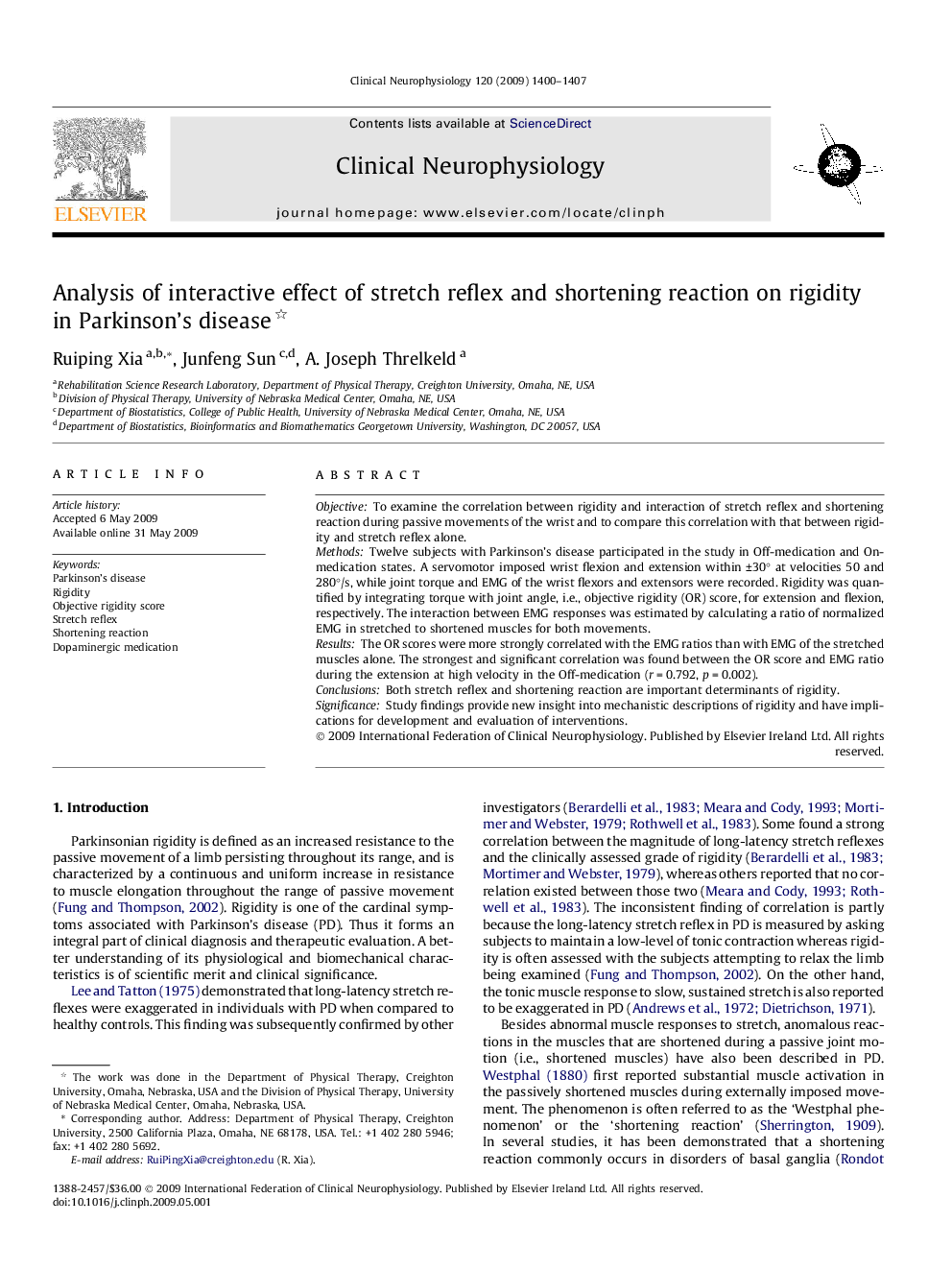| Article ID | Journal | Published Year | Pages | File Type |
|---|---|---|---|---|
| 3046575 | Clinical Neurophysiology | 2009 | 8 Pages |
ObjectiveTo examine the correlation between rigidity and interaction of stretch reflex and shortening reaction during passive movements of the wrist and to compare this correlation with that between rigidity and stretch reflex alone.MethodsTwelve subjects with Parkinson’s disease participated in the study in Off-medication and On-medication states. A servomotor imposed wrist flexion and extension within ±30° at velocities 50 and 280°/s, while joint torque and EMG of the wrist flexors and extensors were recorded. Rigidity was quantified by integrating torque with joint angle, i.e., objective rigidity (OR) score, for extension and flexion, respectively. The interaction between EMG responses was estimated by calculating a ratio of normalized EMG in stretched to shortened muscles for both movements.ResultsThe OR scores were more strongly correlated with the EMG ratios than with EMG of the stretched muscles alone. The strongest and significant correlation was found between the OR score and EMG ratio during the extension at high velocity in the Off-medication (r = 0.792, p = 0.002).ConclusionsBoth stretch reflex and shortening reaction are important determinants of rigidity.SignificanceStudy findings provide new insight into mechanistic descriptions of rigidity and have implications for development and evaluation of interventions.
